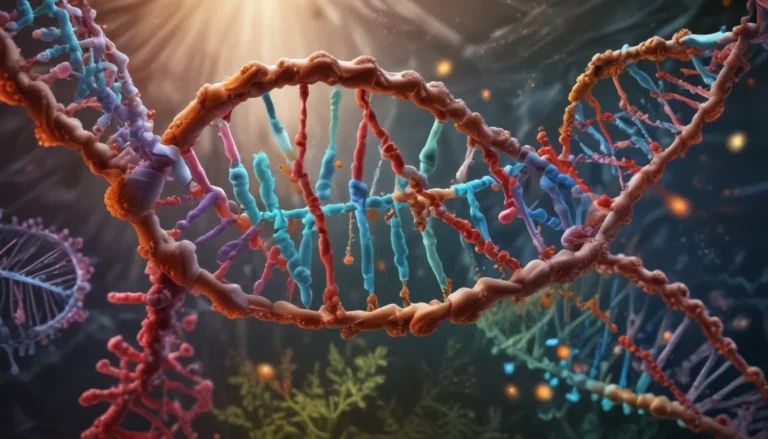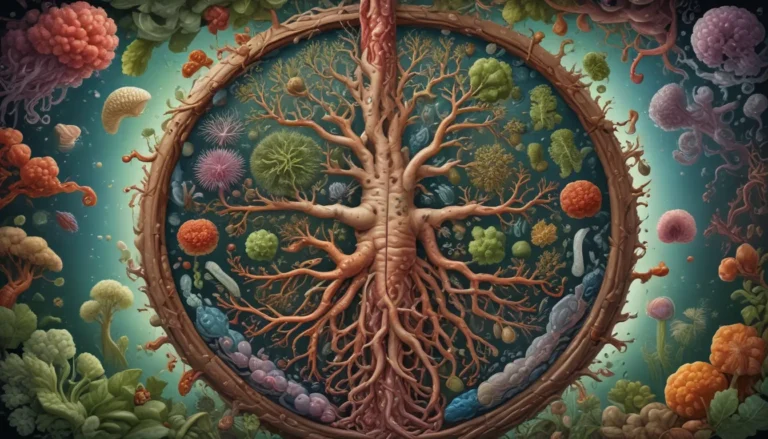A Note About Images: The images used in our articles are for illustration purposes only and may not exactly match the content. They are meant to engage readers, but the text should be relied upon for accurate information.
The human body is a marvel of complexity, with each part playing a vital role in maintaining overall health and well-being. Among the unsung heroes of our body are connective tissues, which provide support, strength, and flexibility to keep everything running smoothly. In this article, we will dive into the captivating world of connective tissues, exploring 15 fascinating facts that shed light on their importance and contribution to our body’s functionality.
Understanding the Basics:
- Connective tissues make up approximately 45% of the body’s total weight, underscoring their significance in maintaining the body’s structure and function.
- These tissues come in different types, including loose connective tissue, dense connective tissue, adipose tissue, cartilage, bone, and blood, each with its unique properties and roles.
- Collagen, the most abundant protein in connective tissues, provides the strength and support necessary for these tissues to fulfill their functions effectively.
The Wonders of Connective Tissues:
- Healing Heroes: Connective tissues play a crucial role in wound healing by forming scar tissue that aids in repairing damaged areas of the body.
- Specialized Support: Tendons and ligaments are specialized forms of connective tissues that connect muscles to bones and bones to other bones, providing stability and facilitating movement.
- Cushioning Comfort: Cartilage acts as a cushion between bones, reducing friction and providing shock absorption to protect the joints.
- Energy Reserve: Adipose tissue, commonly known as fat, serves as an energy reserve and helps in maintaining the body’s temperature.
- Cellular Support: Connective tissues contain specialized cells called fibroblasts, which produce the extracellular matrix that gives structural support to these tissues.
- Elastic Extravaganza: Elastin fibers in connective tissues contribute to their elasticity, allowing them to stretch and recoil back to their original shape.
- Immune Defenders: Connective tissues play a crucial role in the immune response by housing immune cells that defend the body against pathogens and foreign substances.
- Protective Shield: These tissues provide insulation and protection to delicate organs, ensuring their proper function and preventing injury.
- Dynamic Bones: Bone, a dynamic connective tissue, undergoes continuous remodeling, with old bone tissue being replaced by new bone.
- Nutrient Transport: Blood, a type of connective tissue, aids in the transportation of oxygen, nutrients, hormones, and waste products throughout the body.
- Skin Savior: Connective tissues support the integrity of the skin, providing strength and elasticity to keep it healthy and intact.
- Regenerative Abilities: Unlike other tissues in the body, connective tissues have remarkable regenerative abilities, enabling them to repair and maintain themselves more effectively.
The Beauty of Connective Tissues:
Connective tissues are not just passive structures in the body; they are dynamic components that contribute to multiple essential functions, from providing support and protection to facilitating movement and nutrient transport. By understanding the intricate workings of these tissues, we gain a deeper appreciation for the complexity and resilience of the human body.
Delve Deeper into Connective Tissues:
- Sarcoma’s Impact: Exploring how sarcoma cancer affects connective tissues sheds light on the vulnerabilities of these crucial structures.
- Endosteum Exploration: Understanding the role of endosteum within bones can offer insights into the intricate processes that maintain bone health and integrity.
Connective tissues are endlessly fascinating, and each fact unveils a new facet of their importance and versatility. By delving deeper into their properties, functions, and potential vulnerabilities, we can gain a more comprehensive understanding of how these tissues contribute to our overall well-being.
In Conclusion:
Connective tissues are the unsung heroes that support and protect our body, ensuring its proper function and integrity. By unraveling their mysteries and appreciating their diverse roles, we can enhance our understanding of the body’s intricate systems and processes. Let us continue to marvel at the wonder of connective tissues and the remarkable capabilities they bestow upon us.
FAQs:
- Types of Connective Tissues: Connective tissues include tendons, ligaments, adipose tissue, cartilage, bone, and blood.
- Support Mechanisms: Connective tissues contain fibers and ground substance that provide structural integrity and support to organs and tissues.
- Self-Repair Capacities: Some connective tissues have limited abilities to repair themselves, while others, like cartilage, have a more restricted capacity for regeneration.
- Wound Healing: Connective tissues play a crucial role in wound healing by forming scar tissue and aiding in the regeneration of damaged tissue.
- Immune Responses: Connective tissues house immune cells and serve as conduits for immune system components to reach areas of infection or inflammation.
Explore the captivating world of connective tissues and unlock the secrets of these remarkable structures that underpin our body’s functionality and resilience. Dive into their incredible capabilities, understand their vulnerabilities, and witness the awe-inspiring complexity of the human body.






